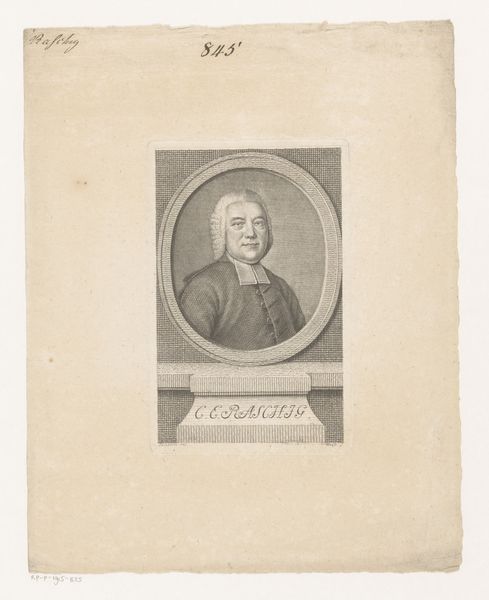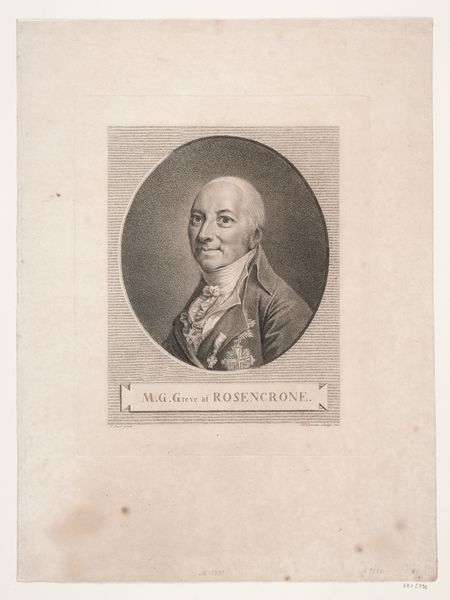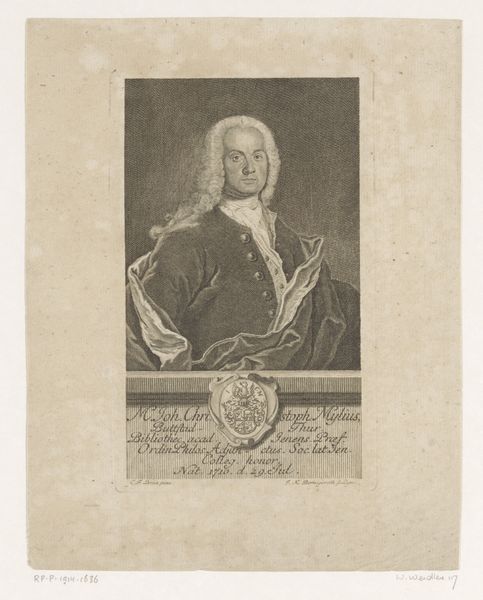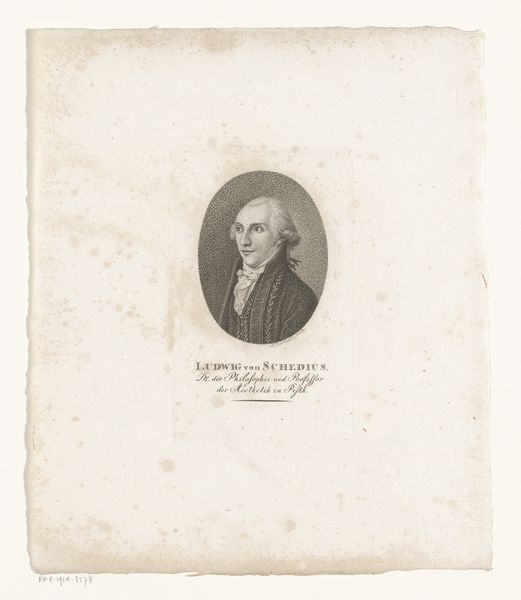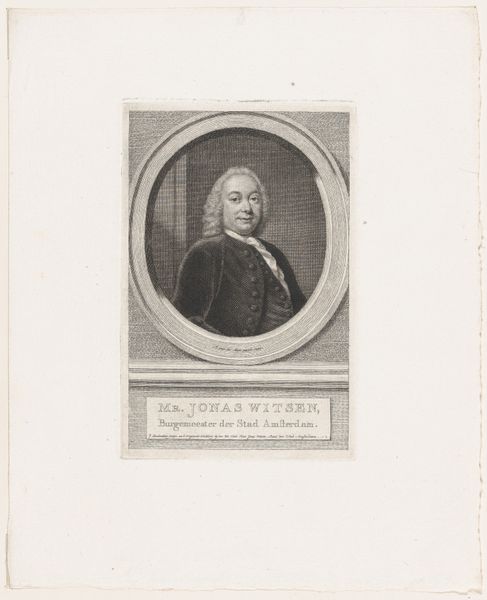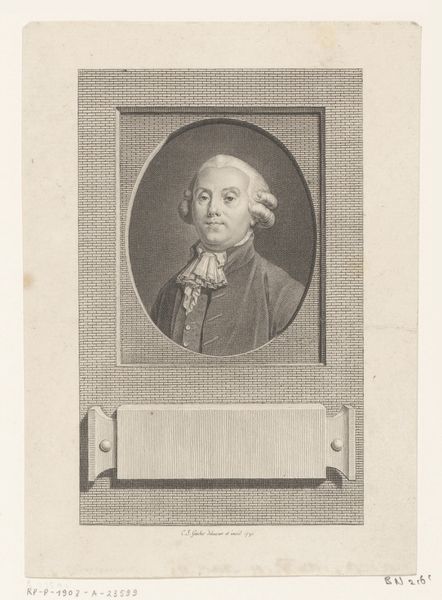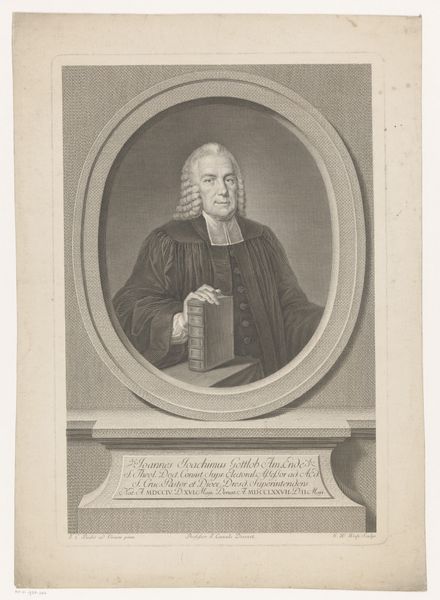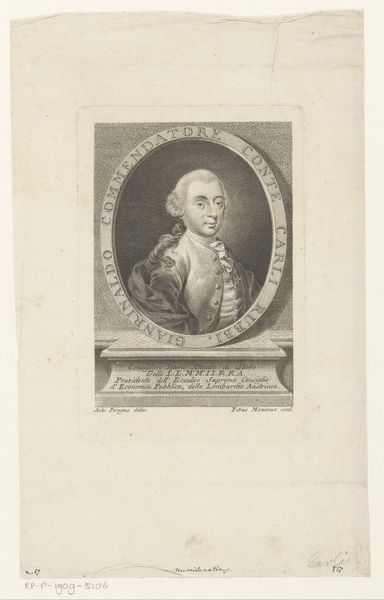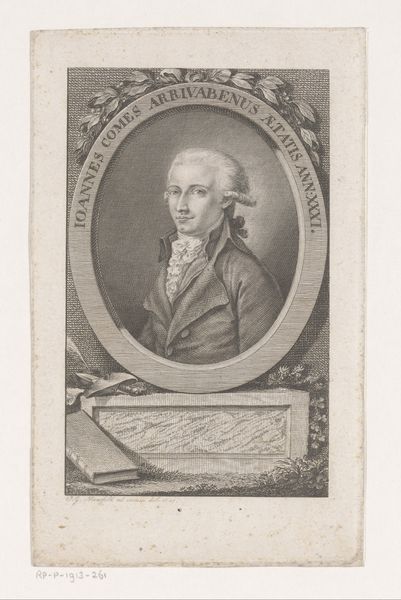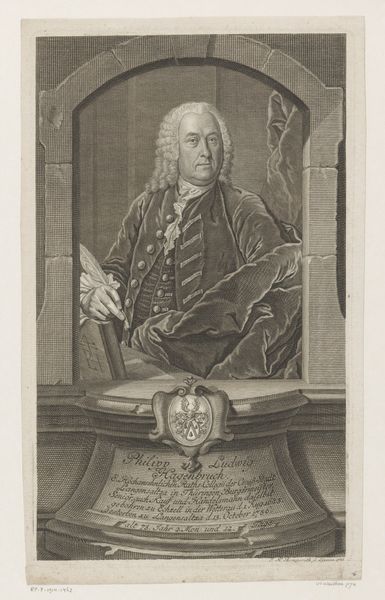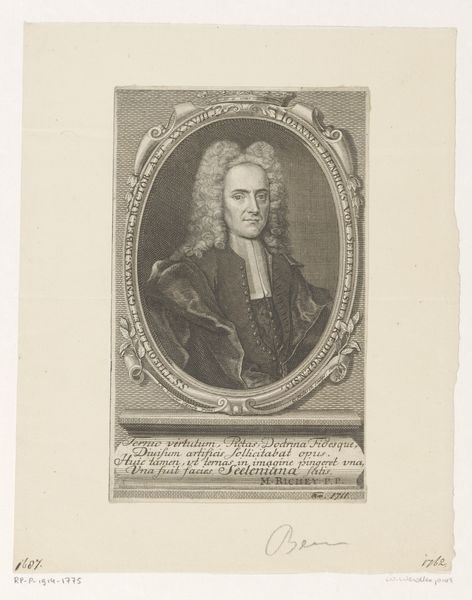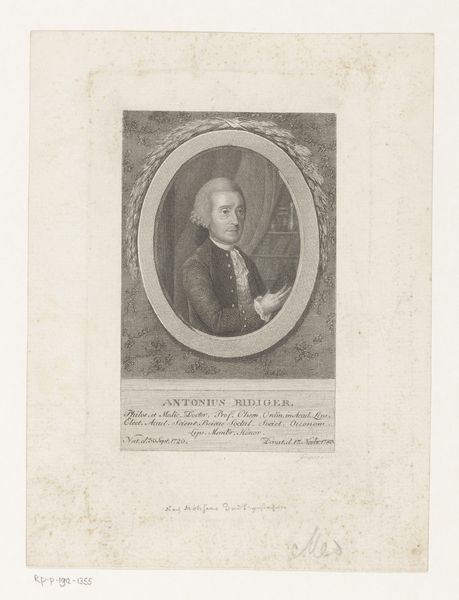
Dimensions: height 286 mm, width 185 mm
Copyright: Rijks Museum: Open Domain
Editor: This is a portrait of Jan Andreas Franz Cristan, an engraving by Franz Sebastian Schauer from 1791. It has this cool, old-world feel to it because of the linear precision and detail. What's your interpretation of this work from a formalist point of view? Curator: Considering solely its formal properties, notice first the oval frame within the rectangular print, creating a dialogue between shapes. Then observe the contrast of textures; the smooth face against the detailed wig and fabric. The engraver used line work to mimic chiaroscuro. How effective do you think this technique is in conveying form? Editor: I think it's amazing how the lines define the shape, and the varying density gives an illusion of shadow, even though there's no color at all! I notice Latin text integrated in the image: do you think its inclusion has any meaning? Curator: Precisely. Text here adds a graphic element that intersects the subject; visually dividing the composition. Notice how the text serves to frame the figure further drawing your eye back within. What do you make of the implied depth in the piece? Editor: Now that you mention it, there are multiple planes created with light and shadow. That pushes the portrait forward while allowing the books and inscription to exist slightly behind him. So much complexity. I had not grasped all the visual components previously. Curator: Precisely. Deconstructing an artwork in such a manner facilitates an engagement with not just WHAT is depicted, but HOW the depiction has been achieved by the artist. It focuses the gaze on the materiality itself.
Comments
No comments
Be the first to comment and join the conversation on the ultimate creative platform.
